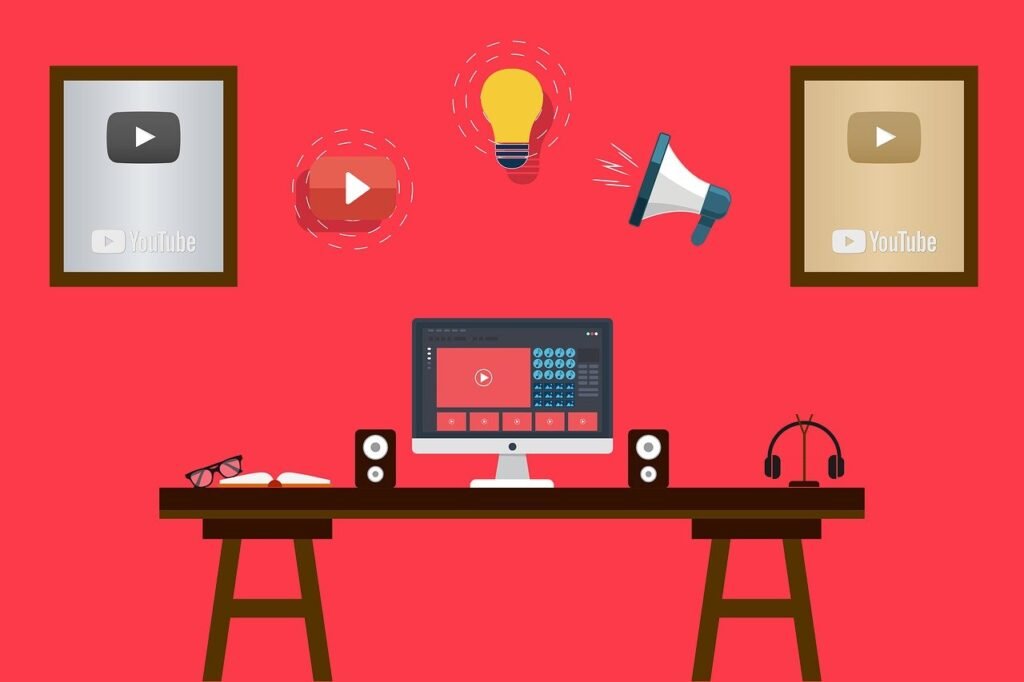- 1. How many sports fans use social media while watching games?
- 2. Why do sports fans follow their favorite teams on social media?
- 3. How many sports fans follow athletes on social media?
- 4. Which is the most popular social media platform for sports fans?
- 5. How does Twitter engagement change during major sports events?
- 6. Do sports fans use social media for conversations about games?
- 7. Which social media platform leads in sports content engagement?
- 8. How important are live updates on social media during games?
- 9. Do sports fans feel closer to their favorite teams because of social media?
- 10. How much sports content consumption happens on YouTube?
- 11. How many sports fans have watched a game or event on social media?
- 12. How do sports fans find sports news on social media?
- 13. How does social media enhance the sports viewing experience?
- 14. How many sports fans follow sports brands on social media?
- 15. How does sports-related content perform on social media?
- 16. How do sports fans use social media to share their opinions?
- 17. How has social media impacted sports merchandise sales?
- 18. How many fans buy tickets due to social media promotions?
- 19. How popular are sports commentators and analysts on social media?
- 20. How does social media participation affect fantasy sports?
- 21. How do sports fans interact with team social media accounts?
- 22. How many sports fans watch highlight clips on social media?
- 23. How does social media engagement relate to sports betting?
- 24. How does a strong social media presence affect athletes' endorsement deals?
- 25. How do engagement rates on Instagram compare for sports teams?
- 26. How does social media influence attendance at live sports events?
- 27. How does social media improve fans' overall sports knowledge?
- 28. How many sports fans follow multiple sports leagues on social media?
- 29. How do social media posts by athletes impact viewership?
- 30. How many sports fans rely on social media for post-game analysis and discussions?
- Conclusion
- We got all the latest Marketing Stats here:
In today’s digital age, sports and social media are deeply intertwined. Fans and athletes alike use social media platforms to connect, share, and engage with their favorite sports content. This connection has transformed how we experience sports, creating a dynamic intersection of real-time updates, fan interactions, and brand promotions. Understanding the key statistics at this intersection can provide valuable insights into how social media is reshaping the sports industry.
1. How many sports fans use social media while watching games?

A whopping 80% of sports fans use social media while watching games. This trend highlights how integral social media has become to the sports viewing experience.
Fans use platforms like Twitter, Facebook, and Instagram to share their thoughts, celebrate victories, and commiserate losses in real-time. This real-time engagement enriches the experience, making it more interactive and communal.
2. Why do sports fans follow their favorite teams on social media?
72% of sports fans are likely to follow their favorite teams on social media. Following teams allows fans to stay updated with the latest news, game highlights, and behind-the-scenes content.
It creates a sense of community and belonging, as fans can connect with other supporters and engage in discussions. Teams leverage this following to build stronger relationships with their audience and enhance fan loyalty.
3. How many sports fans follow athletes on social media?
61% of sports fans follow athletes on social media. Athletes often share personal insights, training routines, and motivational messages, giving fans a closer look at their lives beyond the game.
This direct connection between fans and athletes fosters a deeper sense of loyalty and admiration. It also allows athletes to build their personal brands and engage with their audience in meaningful ways.
4. Which is the most popular social media platform for sports fans?
Instagram tops the list, with 60% of sports fans following sports accounts on the platform. Instagram’s visual-centric approach makes it ideal for sharing game highlights, behind-the-scenes photos, and short video clips.
The platform’s features, such as Stories and IGTV, offer versatile ways for teams and athletes to engage with their fans through engaging visual content.
5. How does Twitter engagement change during major sports events?
Twitter sees a 26% increase in engagement during major sports events. This spike in activity is driven by real-time commentary, live-tweeting, and interaction between fans and analysts.
Twitter’s format is perfect for quick updates and immediate reactions, making it a go-to platform during live sports events. Fans can join the conversation, share their opinions, and feel like part of the action.
6. Do sports fans use social media for conversations about games?
Absolutely, 50% of sports fans use social media to engage in conversations about games. These conversations range from live game commentary to post-game analysis and discussions.
Social media platforms provide a space for fans to express their views, share memes, and participate in debates. This interaction not only enhances their enjoyment of the game but also strengthens the sense of community among fans.
7. Which social media platform leads in sports content engagement?
Facebook is the leader, with 83% of sports fans engaging with sports content on the platform. Facebook’s diverse content formats, including posts, videos, and live streams, make it a versatile platform for sports engagement.
Fans can follow their favorite teams and athletes, join groups, and watch live games, all in one place. This multi-faceted engagement makes Facebook a central hub for sports content.
8. How important are live updates on social media during games?
Live updates are crucial, with 45% of sports fans using social media for real-time updates during games. These updates provide instant information on scores, key plays, and player performances.
Social media platforms like Twitter and Instagram are particularly popular for live updates, offering fans a constant stream of information that keeps them engaged throughout the game.
9. Do sports fans feel closer to their favorite teams because of social media?
Yes, 68% of sports fans feel closer to their favorite teams because of social media. Social media bridges the gap between fans and teams by providing exclusive content, interactive posts, and direct communication channels.
This closeness enhances fan loyalty and makes fans feel more connected to their teams, fostering a stronger emotional bond.
10. How much sports content consumption happens on YouTube?

YouTube accounts for 21% of sports content consumption on social media. YouTube’s extensive library of videos, ranging from game highlights to in-depth analysis and documentaries, attracts sports fans worldwide.
The platform’s searchability and recommendation algorithms make it easy for fans to find and consume a vast array of sports content, making it a key player in the sports-social media landscape.
11. How many sports fans have watched a game or event on social media?
38% of sports fans have watched a game or event on social media. Platforms like Facebook, Twitter, and YouTube frequently stream live sports events, making it convenient for fans to watch games on the go.
This accessibility has broadened the audience for live sports, allowing more fans to engage with their favorite teams and events regardless of their location.
12. How do sports fans find sports news on social media?
55% of sports fans use social media to find sports news. Social media platforms have become primary sources for breaking news, updates, and in-depth analysis. Fans follow sports news outlets, teams, and journalists to stay informed about the latest developments.
The immediacy and accessibility of news on social media make it an indispensable tool for sports enthusiasts.
13. How does social media enhance the sports viewing experience?
63% of sports fans believe social media has enhanced their sports viewing experience. The integration of real-time updates, interactive content, and community engagement adds a new dimension to watching sports.
Fans can share their reactions, discuss key moments, and access a wealth of content that enriches their understanding and enjoyment of the game.
14. How many sports fans follow sports brands on social media?
47% of sports fans follow sports brands on social media. Brands that sponsor teams, events, and athletes use social media to engage with fans, share promotional content, and build their brand presence.
This interaction helps brands to connect with a passionate audience and leverage the strong emotional ties fans have with their favorite sports.
15. How does sports-related content perform on social media?
Sports-related posts generate 30% more engagement than the average post on social media. The high engagement rate is driven by the passion and enthusiasm of sports fans who actively like, share, and comment on content related to their favorite teams and athletes.
This increased interaction makes sports content highly valuable for social media platforms and brands alike.

Related: Check out our free tools:

16. How do sports fans use social media to share their opinions?
75% of sports fans use social media to share their opinions about games. Social media platforms provide a forum for fans to voice their thoughts, whether it’s celebrating a win, critiquing a performance, or discussing strategies.
This open dialogue fosters a sense of community and allows fans to feel heard and connected with others who share their interests.
17. How has social media impacted sports merchandise sales?
Social media has driven a 20% increase in sports merchandise sales. Teams and brands leverage social media to promote their merchandise, offering exclusive deals and showcasing new products. This direct marketing approach reaches a wide audience and encourages impulse purchases, contributing to the growth in sales.
18. How many fans buy tickets due to social media promotions?
41% of sports fans have purchased a ticket to a game after seeing a promotion on social media. Social media platforms are effective channels for promoting ticket sales, offering targeted ads and engaging content that drives interest and conversions. The ability to reach a large, targeted audience makes social media a powerful tool for boosting ticket sales.
19. How popular are sports commentators and analysts on social media?
60% of sports fans follow sports commentators and analysts on social media. These personalities provide expert insights, analysis, and commentary, enriching the fans’ understanding of the game. Following commentators and analysts allows fans to access diverse perspectives and stay updated with professional viewpoints.
20. How does social media participation affect fantasy sports?

59% of sports fans use social media to participate in fantasy sports. Social media platforms offer communities, updates, and resources for fantasy sports enthusiasts. Fans use these platforms to share tips, discuss strategies, and track their fantasy teams, making social media an integral part of the fantasy sports experience.
21. How do sports fans interact with team social media accounts?
42% of sports fans have interacted with a sports team’s social media account. Interaction includes liking posts, sharing content, commenting, and participating in polls or contests. These interactions help fans feel more connected to their teams and provide valuable engagement metrics for the teams themselves.
22. How many sports fans watch highlight clips on social media?
53% of sports fans watch highlight clips on social media. Highlight reels provide quick and exciting summaries of games, making them popular among fans who may have missed the live event. Platforms like YouTube, Instagram, and Twitter are ideal for sharing these clips, ensuring fans stay updated with key moments.
23. How does social media engagement relate to sports betting?
44% of sports fans use social media to engage in sports betting. Social media platforms provide updates, tips, and community discussions around betting, making them valuable resources for bettors. The integration of sports betting content on social media helps fans make informed decisions and share their experiences.
24. How does a strong social media presence affect athletes’ endorsement deals?
Athletes with a strong social media presence see a 27% increase in endorsement deals. Brands value the direct connection athletes have with their followers and leverage these relationships for promotional campaigns. A robust social media presence allows athletes to showcase their influence and reach, making them more attractive to potential sponsors.
25. How do engagement rates on Instagram compare for sports teams?
70% of sports teams report higher engagement rates on Instagram compared to other platforms. Instagram’s visual nature and interactive features make it ideal for sports content. Teams use Stories, IGTV, and posts to share behind-the-scenes moments, highlight reels, and fan interactions, driving high levels of engagement.
26. How does social media influence attendance at live sports events?

32% of sports fans have attended a live event due to a social media post. Teams and event organizers use social media to promote games, offer exclusive deals, and create hype around events. These promotions effectively drive ticket sales and increase attendance at live events.
27. How does social media improve fans’ overall sports knowledge?
58% of sports fans believe social media improves their overall sports knowledge. Social media platforms provide access to a wealth of information, including expert analysis, behind-the-scenes content, and real-time updates. This abundance of information helps fans stay informed and deepen their understanding of the sports they love.
28. How many sports fans follow multiple sports leagues on social media?
49% of sports fans follow multiple sports leagues on social media. This multi-league following allows fans to stay updated on various sports, teams, and events, enhancing their overall sports experience. Social media makes it easy for fans to access content from different leagues in one place.
29. How do social media posts by athletes impact viewership?
Social media posts by athletes can increase viewership by 15%. When athletes share content related to upcoming games or events, their followers are more likely to tune in. This personal promotion by athletes helps boost audience numbers and engagement for live broadcasts and events.
30. How many sports fans rely on social media for post-game analysis and discussions?
50% of sports fans rely on social media for post-game analysis and discussions. After games, fans turn to platforms like Twitter and Facebook to read expert opinions, discuss key moments, and share their thoughts. This post-game interaction enriches the sports experience and keeps the conversation going long after the final whistle.
Conclusion
The intersection of sports and social media is a vibrant, dynamic space where fans, athletes, and brands interact in real-time. These key statistics highlight the profound impact social media has on the sports industry, from enhancing fan engagement and driving merchandise sales to influencing live event attendance and increasing viewership. By understanding these trends, sports marketers, teams, and athletes can better leverage social media to connect with their audience, foster loyalty, and drive growth. Whether you’re a fan, an athlete, or a marketer, social media offers endless opportunities to engage with the sports world in exciting and meaningful ways.
We got all the latest Marketing Stats here:
READ NEXT:
- Geo-Targeting SEO Strategies for International Banks
- How to Effectively Protect Your Startup from Hackers and Digital Threats
- Multilingual SEO for Global Banking Brands
- SEO KPIs to Monitor in Financial Services
- SEO Strategies During a Travel Crisis





















Comments are closed.